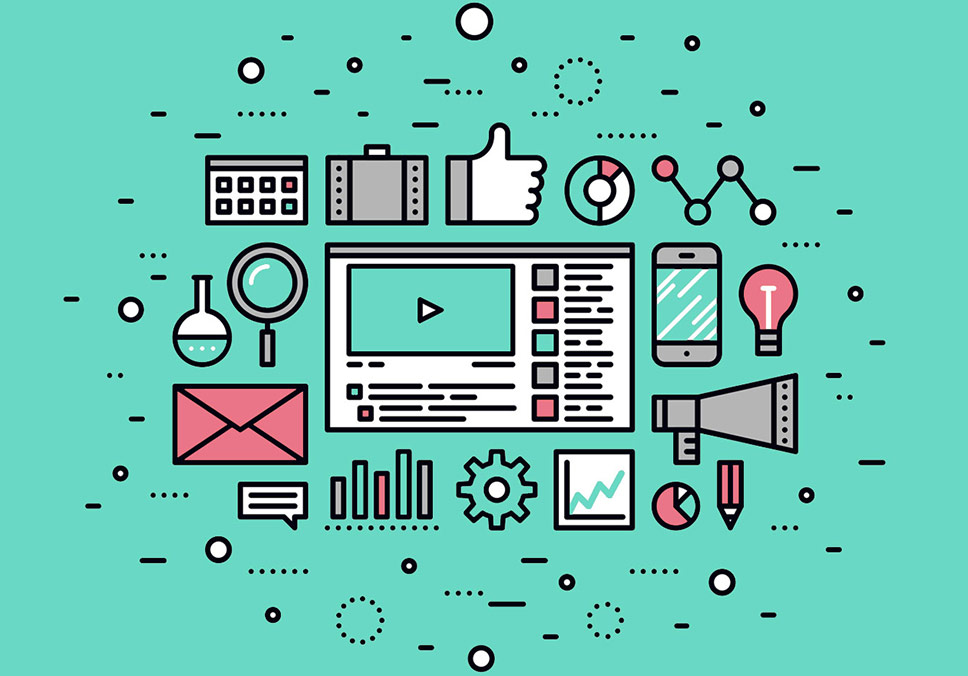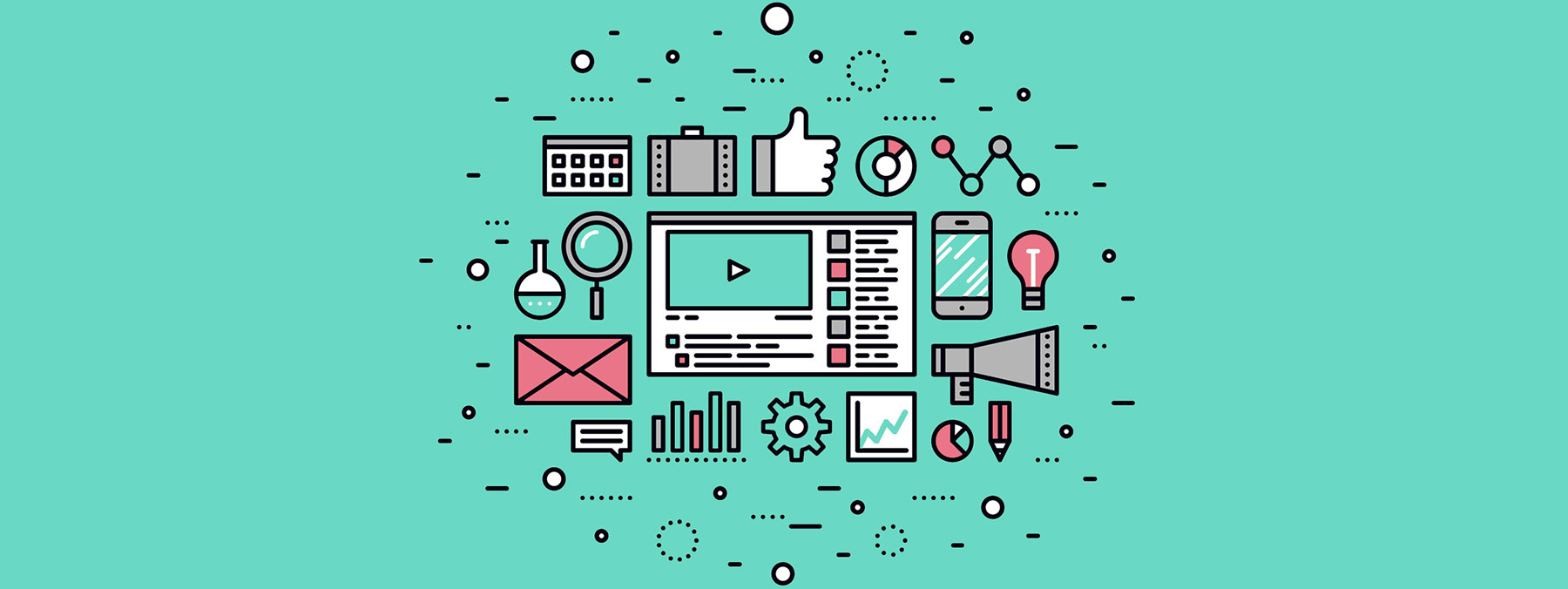Talk to someone about themselves, and they’ll listen for hours.
– Dale Carnegie
This famous quote is as true today as it was in 1936, and it applies to many areas of life in general and business in particular, including lead generation. Talking to your valuable prospects exactly when and where is more convenient for them, about their goals and needs (rather than going straight for the hard sell), puts you in a much better position to introduce your product or service to willing ears.
The question is: How do you get to begin that conversation?
The approach set out in this article enables agile and efficient lead generation, with higher marketing ROI, better use of resources, and more high-quality leads.
There was a time when businesses would place ads in newspapers with different phone numbers to track which generated more leads. Those were the early days of data-based marketing. In fact, many of the most popular marketing tactics are surprisingly old. Advertising appeared in Italy in the 1600s; cold outreach can be dated back to 1864 – the earliest recorded use of telegraph for mass unsolicited sales messaging; segmentation is over a hundred years old; and Customer Relationship Management (CRM) software was born in the 1980s.
In the 2000s, companies were used to what could now be called, from the dizzying distance of the 2020s, the ‘traditional’ outbound approach – cold calling and emailing. Then came inbound marketing with its declaration that ‘content is king’ and the message of if you write it, they will come. It sparked a whole inbound versus outbound debate. Proponents of the former argued that the latter was outdated, pushy and ineffective. Meanwhile, Team Outbound would point out that email, advertising and account-based marketing remained far more effective for lead generation. And that producing a constant stream of quality content able to break through the information overload of the average 21st century consumer was a costly and time-consuming feat.
Which side was right?
To an extent… both.
The winning strategy is proving to be a custom blend of the old and the innovative.
In other words, a strong lead generation strategy is a happy marriage between science and creative solution-finding, between time-tested tactics, quality content, the latest AI, automation, and the specific nuances of a company’s solution, resources and target audiences.
It comprises five key elements:
1. Integrated multi-channel strategy
2. High-quality content
3.Effective marketing automation
4. Advanced lead scoring and automated analytics
5. Human touch at the right time
1. Integrated multi-channel strategy
Consider the following:
- Top-performing salespeople see the best leads coming from marketing activity1.
- Account-based marketing is one of the most effective B2B marketing tactics.
- 78% of salespeople engaged in social selling outsell those who are not2.
It all begins with the opportunity to start a conversation. You do that by
- understanding your target audience personas
- being where they are
- offering something they care about
- nurturing them through their buying journey with targeted content
- presenting solutions that are focused on improving their business and/or their career.
Ticking these boxes calls for a multi-channel approach. For example, cold outbound marketing in the form of an email or call is much more effective when combined with content, outreach and engagement on social media, robust data management, and sophisticated analytics.
Let your prospect choose where and how you have your conversation. For instance, instead of buying an expensive, static contact list and wasting resource cold-calling everyone on it, look at AI powered SaaS platforms that can provide you with the most up to date business contact information.
Create highly relevant quality content in the form of a downloadable article or a webinar that will both introduce your brand and build your reputation.
Promote this content via digital ads to a list of your target audience and link to it from your outbound and nurture emails. The goal is to build trust in your brand, show your target audience you understand them, educate and move them closer to a point where they’re ready to have a sales conversation.
Then, depending on the number of downloads of your lead generation content or webinar registrations, reach out to these prospects on the phone or enrol them on a well-crafted, personalised nurture email campaign that provides more value upfront, thus strengthening the company’s brand in their eyes.
Prioritise your calls (no longer so cold) according to who has engaged with this content the most, perhaps opening the email several times, clicking on a link or spending more time reading it.
This approach serves as a useful way to identify the more engaged prospects, as well as to confirm the topics and messaging that resonate with your leads. Moreover, it generates momentum and allows you to continue that conversation, because, even if a lead doesn’t become a client today, the relationship you build has the power to motivate them to get in touch with you tomorrow, or to be much more receptive next time you pick up the phone.
2. High-quality content
This is imperative. A lead that’s lost to an unsuccessful phone call, a webinar that ends up being a forty minute sales presentation or downloadable content that doesn’t quite fulfill its promise, is much harder to reconnect to.
High quality content isn’t just a well-written piece. It is well-researched, useful, engaging and targeted writing that leads the reader to a desired action. It shows prospects that you understand their business needs – perhaps better than anyone else in the market.
For most companies, that will need to be a combination of several content categories – more strategic pieces for the C-Suite and more tactical and technical content for the end-users and operations teams. Furthermore, it is important to address the many layers of the B2B buying journey – from identifying a problem to reaching internal consensus in favour of a supplier.
Cooperation between sales and marketing teams is, therefore, another essential element of success. Content that targets key customer pain points and frequent bottlenecks in sales conversations will considerably improve the lead generation and sales processes.
The contemporary buyer journey has become a loop rather than a pyramid or a linear string of events3. The number of brands considered in the research and evaluation phase often increases rather than decreases4. Yet, as much as we seem to crave them, too many options can actually paralyse decision-making5.
When your lead generation is based on high-quality content – from blog and lead magnets to emails, landing pages, and ad copy – you’re well-positioned to overcome this obstacle in the sales process and position your company as the optimal choice.
Focus on quality and value is key in this process. Nurture your audience by first helping them articulate the problem, then by presenting different potential solutions and their respective pros and cons. Make sure each piece of content is specific to its target audience, from their needs and challenges to their job position and industry. Finally, inform prospects of everything they need to consider to adopt the solution that will be the most beneficial to them.
That way, the chances of a lead coming to you when they’re finally ready to buy are considerably higher. If the content you offer is notably better quality than your competitors’, they might not even feel the need to consider other brands altogether.
3. Effective marketing automation
Marketing automation should bring in more sales by allowing you to achieve more with less.
How? By creating an integrated platform for marketing and business development.
Though your competitors may have content for each stage of the buyer journey, too, the key is getting the right piece of content in front of the right people at the right time – much like with a cold, fresh lemonade on a hot summer’s day. You wouldn’t be very successful trying to sell it at 8.30 in the morning, but place your stand outside an office building at lunchtime with a banner emphasising its energising qualities, and you’ll soon wish you had brought more.
Integrating your marketing activities with CRM and sales processes will enable you to do just that – to nurture your target audience from the awareness stage through to becoming an evangelist.
A highly effective B2B lead generation tactic is combining LinkedIn, email and telephone. Reach out to prospects on LinkedIn first. Then, depending on their reaction (or lack thereof), message them on LinkedIn or use marketing automation to enrol them on an outbound email marketing campaign. Advanced tools like HubSpot can track the status of leads, highlight which parts of your communication prospects engage with more and adapt what they receive based on these preferences – whether that’s more nurturing content on a specific topic or the next step in the buyer journey.
Moreover, since all your data is together in one place, you can constantly monitor and adjust your campaigns as necessary.
4. Advanced lead scoring and automated analytics
How do you define the most opportune moment to call a potential customer?
Qualifying a lead should cover more than looking at separate data sets from social media, email and website analytics. In order to identify the best sales opportunities, you need to see ‘the full picture’ and automate an overview of the entire buyer journey. That includes knowing
- When and what their first interaction with your brand was – whether a download, a blog article, a cold email or a post on social media
- What the email open and click rates are
- If and how they have interacted with your website, what pages they have visited and how much time they have spent consuming your content. (It is worth making sure the website analytics set up provides you with a clear overview in relation to your business goals.)
- How and if they have interacted with the brand on social media
- A lead’s historic responsiveness
- As well as lead scoring based on campaign-specific criteria. For example, in the case of a webinar, you could integrate the chosen webinar software with Hubspot to include questions like:
- Did they show up to the live event?
- How long did they stay?
- Have they watched the webinar recording?
- Have they looked at any of your content or sales pages following the webinar?
The moment you have all this information together, you can start noticing patterns, identify engaged leads and the ones most likely to buy. You have the power to make data-driven decisions and prioritise your sales activity.
A good CRM platform will help you to measure the quality of your lead scoring criteria and the impact of your sales methods and processes. AI can further facilitate this process by evaluating leads against closed deals and identifying behavioural patterns of those most likely to buy. It is also a valuable tool in managing customer relations, calculating customer lifetime value, as well as identifying opportunities for upsell.
Furthermore, effective use of marketing automation and CRM can prove paramount to more than your lead generation process. A thorough marketing automation set up lets you track your interactions, manage relationships, evaluate previous campaigns to inform your content strategy for the next quarter, and maximise business opportunities by ensuring salespeople call a potential customer at the right time.
It is a path towards more efficient and agile operations across the company.
5. Human touch at the right time
Research shows that data-empowered sales decisions and digital practices at strategy level can lead to five times higher revenue growth6. This does not, however, eliminate the human touch. Quite the contrary, B2B buyers want both digital and human interaction, and they want it to be a consistently positive experience.
What they are looking for the most is speed, transparency and expertise7. This indicates that digital operations and integrated systems will be crucial elements of future business growth – something that an increasing number of market players recognise, including Deutsche Bank in its announced radical transformation8.
Companies that master the interconnect between digital and human achieve eight times more operating profit than their peers9.
The goal is to make sure that every part of your marketing strategy works together. The result will be a quality lead, a positive customer experience, and a sales team that knows exactly when and whom to call, which topic is more likely to resonate with the prospect and what angle to approach the sale from.
The science behind an exceptional lead generation strategy lies in the integration of tools, activities and communication channels, as well as teamwork and creative solutions that improve your understanding of prospective customers. It helps you to adapt your content and lead generation strategy to the needs of the specific campaign.
More often than not, this ends up being a transformational process that optimises the resources at hand, saves time for your teams, and introduces agility and efficiency that inevitably lead to higher profitability.
- Hubspot Marketing Statistics 2020
- Ibid.
- Gartner, The New B2B Buying Journey
- McKinsey & Company, The consumer decision journey
- S. S. Iyengar, M. R. Lepper, When Choice is Demotivating: Can One Desire Too Much of a Good Thing?
- McKinsey & Company, How B2B digital leaders drive five times more revenue growth than their peers
- McKinsey & Company, The secret to making it in the digital sales world: The human touch
- Deutsche Bank, Deutsche Bank announces radical transformation
- McKinsey & Company, The secret to making it in the digital sales world: The human touch



